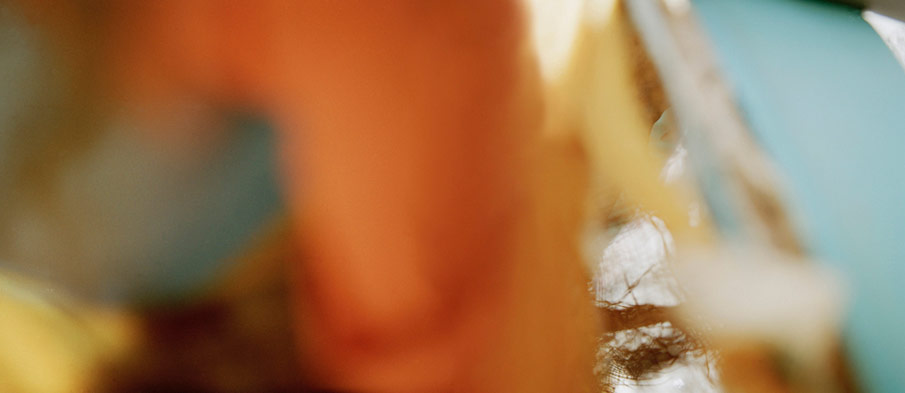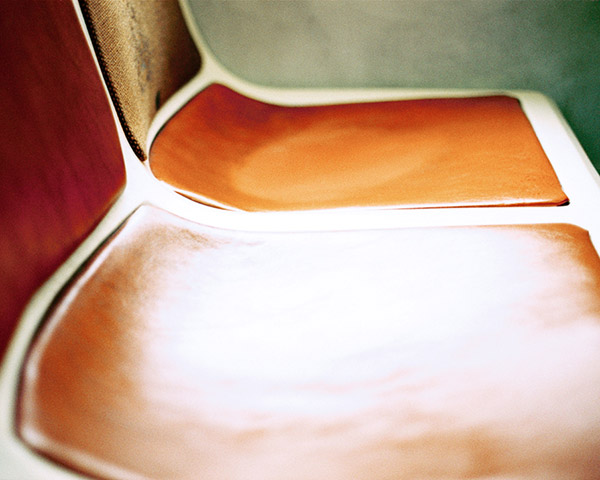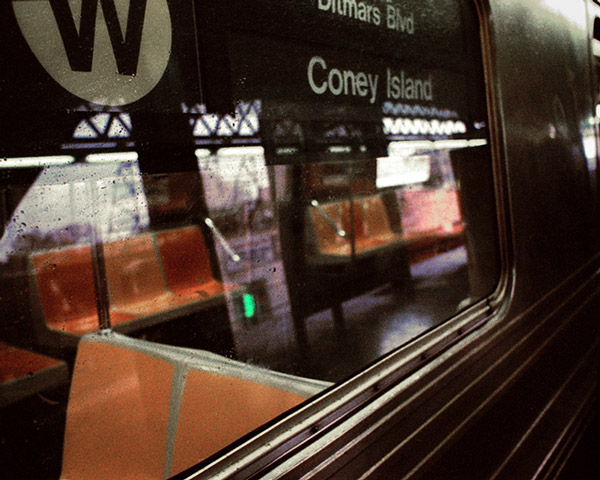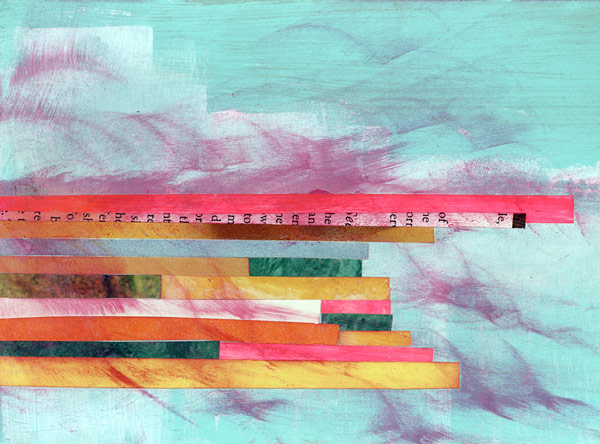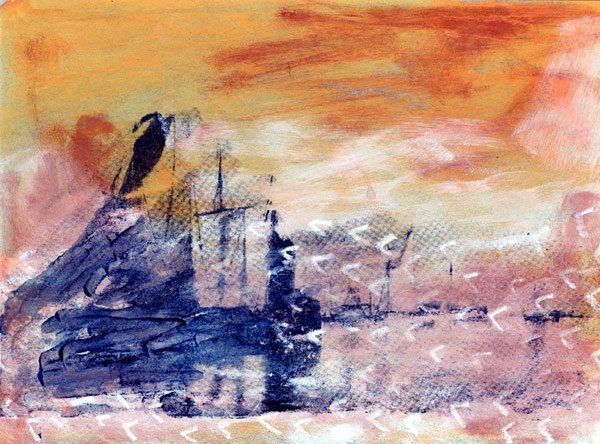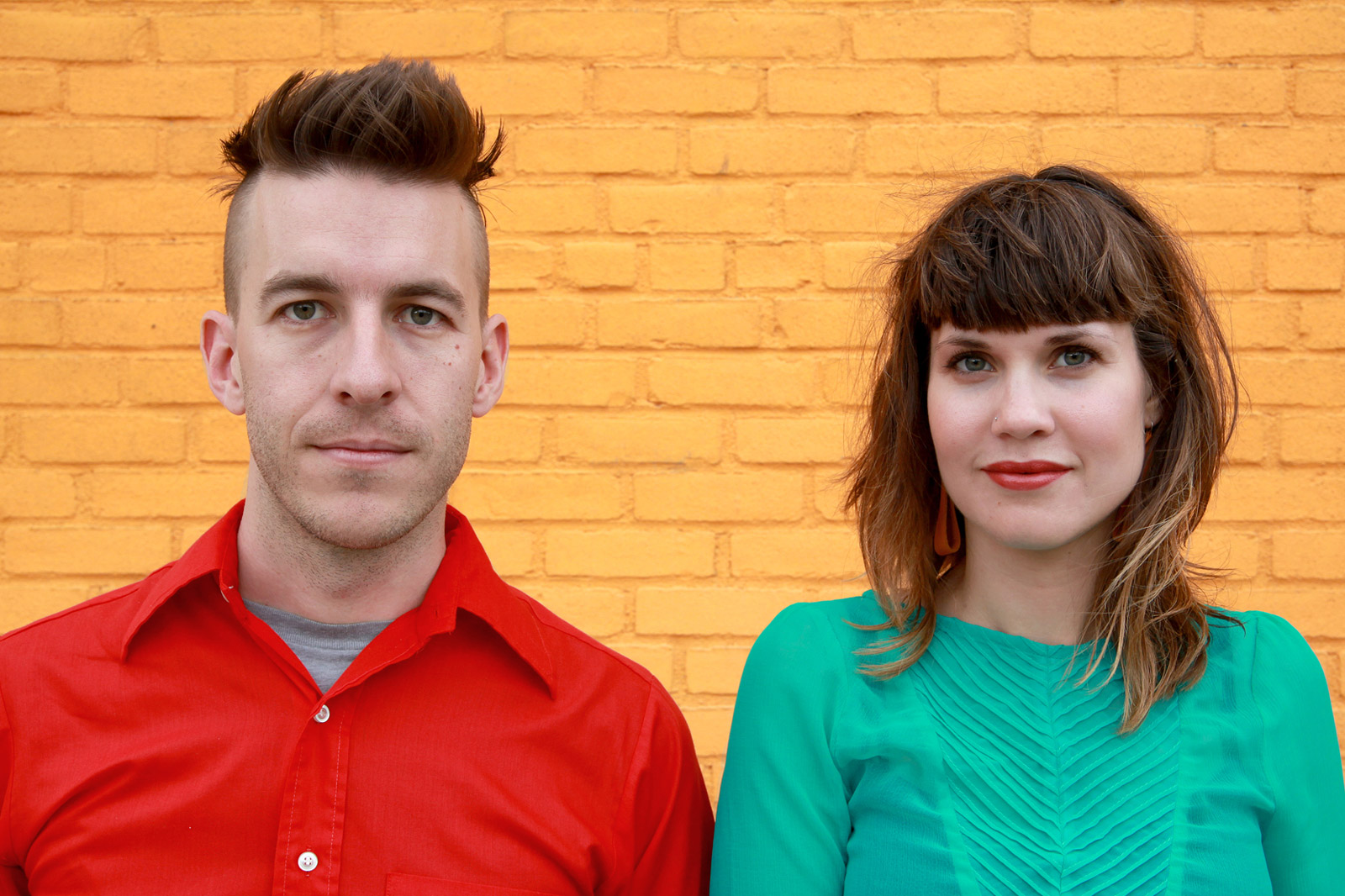
- Interview by Ryan & Tina Essmaker July 3, 2012
- Photo by Julia Parris
Able & Julia Parris
- artist
- designer
- photographer
Able Parris is an award-winning interactive designer, art director, and internationally published artist working at Big Spaceship. He attended Rhode Island School of Design and Rhode Island College and has over eight years experience designing for the web with a focus on strategy and UX. Julia Parris is a mixed-media artist and commercial photographer. She graduated with her BFA in Photography from Rhode Island School of Design before starting her boutique photography studio and teaching. Able and Julia live in Brooklyn, New York.
Interview
Would you both describe your path to what you’re doing now?
Able [A]: In my case, I wasn’t supported in creativity at all while growing up, which is where Julia and I differ. I didn’t have a creative childhood. I had an imaginative childhood in my own world, but it wasn’t cultivated. Throughout high school, I was in photography class and that was a creative outlet, but my parents didn’t encourage me to have a creative outlet at home and, in fact, that was discouraged in many ways.
I also wasn’t encouraged to ask questions, which is strange because I ask a lot of questions and that’s what I enjoy about design—prodding, asking questions, and investigating in order to solve problems.
What’s interesting is that I graduated high school and didn’t know why I would go to college. I didn’t have a career goal or anything. I was working at a pet store down the street because it was corporate and I got insurance.
Julia [J]: A side note—that’s how I first met Able. He was the “photo guy” at our high school and I met him in the darkroom.
A: Yeah, we met in high school, but weren’t really friends. It wasn’t until a few years out of high school that we met and became friends.
I had looked into going to the art school that Julia had went to, but I talked to somebody there and was told that I wouldn’t get in because I didn’t have any drawings or paintings in my portfolio—I only had photography. I was a good writer and I had had four years of photography in high school, but after graduation, I just gave it up because I didn’t have an outlet for it.
A couple of years later, I became friends with Julia and her friends who were in art school. They were taking foundation art classes and making crazy stuff. Julia would stay up all night long making these huge clay and steel sculptures that were bigger than her. I thought, “What is this? This is crazy to me.”
I’ll shorten this next part up. Julia and I got married and she transferred to Rhode Island School of Design, so we moved to Rhode Island together. When we visited RISD it hit me—this was where I needed to be and I needed to do whatever I could to get there. I didn’t go to college until I was 24. I didn’t have a GPA or SAT scores. I went to a state school, did the foundation program, built my portfolio, and then transferred into RISD. Shortly after that, though, I left RISD when they started asking me for money. So, in a way, I’m self-taught.
J: Able, your story is so sad.
A: This story is awesome because I overcame! So, Julia graduated and I left RISD at the same time. We started our own companies and now I’m here.
That’s an awesome story. Did you guys grow up in the same city?
A: No. I grew up in Wyoming, moved to Kansas City when I was 15, and met Julia a year later when I transferred to her school.
J: And I’m from Kansas City.
Tina: So, Able, meeting Julia was part of your path?
A: I really wouldn’t be doing what I’m doing now if it weren’t for her. She’s made a lot of sacrifices to help me do all of this. She saw something in me and told me I needed to be at RISD. Somehow I made it in and I wish I could have finished, but I wouldn’t take it back; the weird little path I’ve taken has been awesome.
We joke around about how we’re Team Parris. We were both self-employed at the same time, had a shared office, and worked on projects together for two years. A couple years later, we were back together working on projects for an ad agency where Julia was lead photographer. Now, we have a few side projects we’re working on. We enjoy collaborating with each other.
So that’s my roundabout path to where I’m at now. I’ve been doing graphic design and making websites for eight years and I’m currently at Big Spaceship.
What about your path, Julia?
J: Mine is probably the extreme opposite. Even if they didn’t always understand the conceptual side of fine art, my family was and is very supportive. I took painting classes and was always involved in fine arts at a young age. I was active in community theater, played the cello, piano, clarinet, and studied voice at a Suzuki music school.
A: Suzuki?
J: Yeah, it’s a method of classical training.
A: I didn’t know that. I’m learning some things.
J: My family is very supportive of the arts and it was expected that I would go to college after school. In my junior and senior years of school I had to decide if I should go to a music conservatory or pursue art school. I was a 4.0 kid and knew I had to get a scholarship to go to either one because it’s so expensive and I couldn’t go otherwise. I had to bust my ass. I hated high school and my sole purpose there was to work on my portfolio, keep my grades high, and get scholarships. I got into several schools and decided to start out at Kansas City Art Institute pursuing the visual arts.
On my first day of class, I met Able again at the Kemper Museum of Contemporary Art next to my studio. He thought that I had gone to the Chicago Art Institute. That was the beginning of, “Oh, hey! What’s going on? Oh, you’re in Kansas City—I work right next to your studio.”
(all laughing)
My parents were very supportive, but also wanted me to be able to get a job, so it was a juggling act of figuring out how I would make a living and get a job to pay back student loans while being an artist. That’s a continued conversation I still have with my parents.
I originally thought I was going to focus on painting and printmaking. I had always done photography, but it hadn’t occurred to me to focus on it. At the end of my foundations year, it struck me that I wanted to be out in the world, making and responding to experiences, people, and situations; that drew me in more than painting in a studio day after day did. My minor is in printmaking and I still paint and draw regularly. My photography borrows a lot of color theory and painterly instincts.
Ryan: How did you guys wind up in New York?
J: How did we not? While I was at RISD, I had several close girlfriends who lived in NY. I would come up with reasons why I needed to go to NY for the weekend to shoot for school projects. It was so stimulating, inspiring, and the diversity was refreshing for both of us. I loved it from the beginning and we just kept coming over the last ten years—as a side note, we just celebrated ten years of marriage in March.
A: Even though we lived three hours away in Rhode Island, it wasn’t easy to come up here because we didn’t have any money. Buying a bus ticket was a sacrifice and then we’d get here and eat peanut butter and jelly sandwiches.
J: It was worth it to us. I would say our relationship to NY is different than most. Some of our friends know NY from business trips or client dinners. Our time here started with PB&J and chilling in Brooklyn. (laughing)
A: Last year when I got hired on at Big Spaceship to work with Dan Mall—that was what literally brought us here.
J: That was the opportunity we were waiting for.
A: It was interesting because when we first started visiting NY, I hated it. It stressed me out. We would always end up spending more money than planned. We would wander around and try to figure out where we could go to use the bathroom. Also, I don’t really like crowds.
Then I had a moment when I thought, “I could live here.” At the time, Julia was shooting a subway series and we would ride the bus to the city, get in late, hang out with friends, and get up early the next day to ride the subway from end to end. This was before smartphones. I couldn’t read or play games or listen to music or share photos. I would just get lulled to sleep by the train. It wasn’t fun for me.
One time, we were coming back from Coney Island and we fell asleep on the train because we were so tired. I heard “14th Street” and woke Julia up to tell her we had to go. We walked up the stairs and there were trees everywhere; there were Brownstones; the sky was blue; I could hear birds singing. I said, “What is this place?” I’d never been to such a nice Brooklyn neighborhood. It felt like Providence, where we lived in Rhode Island. If it weren’t for Brooklyn, I wouldn’t be here. I love Brooklyn.
“I learned that breaking things and testing the limits was not only important, but it was enjoyable and amazing results could come out of it.” / Able
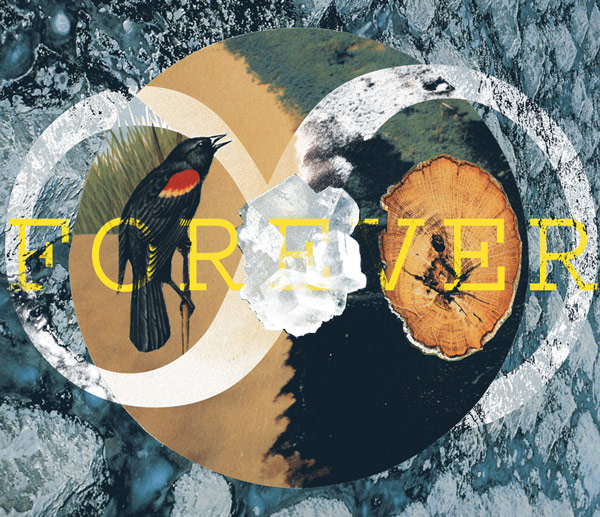
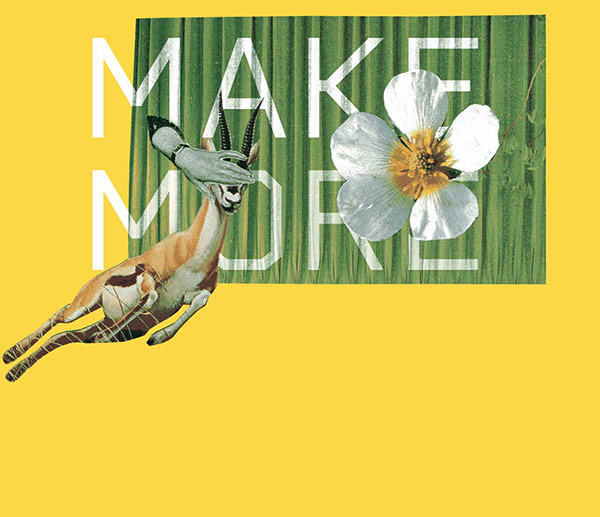
Was there a point in your life together when you had to take a big risk?
A: Well, there was the time we moved to North Carolina site unseen. We just packed up and left.
Did you just point on a map and move there?
J: Kind of. Right out of RISD, we started our own studios. I was shooting and teaching. I started photographing weddings right out of school because there weren’t a lot of photo jobs and I needed to be actively shooting and building more business skills by interacting with clients, closing jobs, etcetera.
I also taught continuing education at RISD, classes at the Community Arts Gallery, and worked with the Girl Scouts of Massachusetts teaching photography and collage to over 100 girls who earned a special photo badge. That was great because I got to travel all over Massachusetts to teach the class. It was 2004–2005 and my technological assets were small. I had an old-school projector and would start each class with an art history lecture that brought context to our projects. My favorite was teaching German Dada photomontage to 12 to 17 year old girls. I focused on teaching them confidence and how to express themselves through the arts. At the end of the program, I curated a gallery exhibition honoring the girls, their ideas, and their work. It was incredible.
All of that was fantastic, but after two years, Able and I came to a point in our businesses where it felt like we needed some kind of transition. Looking back, I would say that both of us starting our own businesses at the same time and right out of school was probably the biggest risk, although it didn’t feel like it. We graduated and we figured we’d make it work somehow, and somehow it did work.
A: No, you graduated.
J: Well, when I say that we graduated—I have to clarify. Although Able wasn’t enrolled, he attended lectures with me all the time. If I was working in the studio all evening, he’d come in and work on his own projects. That was the only time we could hang out. We saw RISD very much as a resource for both of us. Able also had a painting studio with one of our friends who was in the illustration department at RISD.
A: Yeah, I wasn’t even in school and I had my own painting studio. And we had a friend in the furniture department who let me use his woodworking shop to design and make a shelf for our bathroom. While he was helping me make it, he told me I should go into furniture, which I almost did.
J: All of that to say that even though I have a certificate for my BFA, I feel like we both graduated because we spent so much time making, working, and thinking.
So yeah, we were at a transitional point. I was reading Travel + Leisure and they had a stunning article about Asheville, North Carolina. Somehow it sold me that there were a lot of artistic and creative opportunities for jobs and we thought that the price point would be lower. I really like Asheville and we met some really cool people, so it wasn’t a complete wash, but we couldn’t find any work because it’s such a tourist-driven economy and I would’ve had to go back to waiting tables. I wasn’t prepared to go back to that after running my own business for three years. Then Able ended up getting a position in the Raleigh-Durham area so we moved to the suburbs there.
A: It was a company from Rhode Island that I had previously done some freelance work for. They moved their company to the Raleigh-Durham area. Julia and I lived in that area for four years before we moved to Brooklyn last July.
“I was surrounded by this art that was so foreign to me. I understood the beauty in it and appreciated it, but I didn’t know what someone would follow in themselves to act on that. A kid doesn’t have inhibitions; he doesn’t question why—he just does. I had to unlearn some of that stuff that stopped me from doing things.” / Able
Did you guys have any mentors along the way?
A: I’ve had a lot of friends that have encouraged me. A friend from Kansas City gave me a giant sketchbook and a contè crayon and I started filling the book with drawings of my goldfish and guitar and plants. I would also write songs and poetry in it and once we moved to Rhode Island, I started drawing furniture and collecting postcards and stickers. That’s where collage began for me—from taping all this stuff in my sketchbook.
Not to overstate it, but our time in Rhode Island was the most special time in our lives. The community we had there can’t be reproduced. We were the only married couple and our apartment was open-door. RISD students would come in and work on whatever they were making. We learned from each other and it was empowering.
There, I was surrounded by this art that was so foreign to me. I understood the beauty in it and appreciated it, but I didn’t know what someone would follow in themselves to act on that. A kid doesn’t have inhibitions; he doesn’t question why—he just does. I had to unlearn some of that stuff that stopped me from doing things. When that happened, something clicked and I couldn’t stop thinking about ideas and what I was going to make. It was like a weird philosophical, spiritual time.
So, do you consider your peers to be mentors?
A: Creatively they were. I had another mentor who passed away a few years ago. He was a contractor and I met him because I started remodeling homes with him. He brought me in under his wing and became this father figure that I never had. He instilled in me that I could physically and creatively do anything I thought of.
Some of the work I did with him was stuff I never thought I could do, but I did it day after day for two years. There would be days where he would drop me off at a house in the suburbs of Kansas and tell me to dig an 8-foot deep hole that was 5-feet by 5-feet. I’d have to dig for eight hours and then move the dirt to another location. Or I’d carry giant piles of 12-foot sheetrock up to the third floor of a house.
There were little lessons all the time. If I broke something, he’d just say, “No problem. It’s fine. We’ll just fix it.” I learned that breaking things and testing the limits was not only important, but it was enjoyable and amazing results could come out of it. I could drive by a house and see the second floor that wasn’t there six months prior. The family that had been living in a tiny one-floor home now had a second story because I crawled up on the roof in the snow and cut it off with a sawzall to add a second floor.
The mentality I learned during that time combined with becoming part of a creative community where people were pushing the limits with conceptual things—that was a weird combination for me.
J: It was almost like he was learning temperance. He’s really patient and can sit and work a type treatment for a long time. I can see how that job affects his work today.
A: Yeah, I owe a lot to him.
“It’s healthy to have several projects going on at once. If I get stuck or frustrated with a drawing, I can put it away for a while and work on my photography. I usually find that in giving projects time and space to breathe, I produce better work.” / Julia

Julia, did you have any mentors?
J: I’ve loved art history for a long time and was always reading books about the lives of artists. There are artists I look up to who are dead, but they continue to inspire me. The teachers I had at RISD were incredible and so I would say, in a lot of ways, those professors along with my peers in our community really shaped and formed who I am now.
Are your family and friends supportive of what you do?
A: Julia’s family is. They’re incredible. My brother and I are really close and he’s super supportive and encouraging. He texts me every day saying, “You’re amazing.” If he doesn’t text me, I’ll text him and beat him to it. We’re really good friends now; we weren’t when we were growing up, but we’ve gotten much closer over the past ten years.
J: What we do is so different than what everyone else in our families does. Some of our projects are still a little bit of a mystery to them, but they’re really supportive.
It’s funny. I was recently in a group show back home in Kansas City and we were staying with my folks. My parents came out to the gallery opening and my dad was looking at all of the work and taking it in. Then he said really loudly, “Well, you know, I still think your piece is the best one in here.”
A: Total dad moment.
(all laughing)
I should say, though, that they are a good balance. It’s this other reality. There are other things to talk about besides art, design, and our industry with them. If we spend a weekend with her family or my brother or sister and their kids, it’s fulfilling in totally different ways. We don’t feel like we have to suck creativity out of people; we can love them for who they are and let those relationships and bonds be what they are. Those relationships are inspiring in different ways.
Do you guys feel a responsibility to contribute to something bigger than yourself?
J: I definitely see life being much bigger, greater, and more complex than me and my pursuits in the art and design world. I think that’s partially why it was so fulfilling to be a resident artist with the Girl Scouts—being able to have an impact on girls who are coming of age was fulfilling in a way I haven’t felt since. That’s an important part of my life and I want to always be able to contribute in some sort of a way. Able and I have mentored younger artists and given portfolio reviews. I would say we both feel like it’s important to give back to the younger generation and be able to encourage and challenge and push when we can.
A: I was going to say a similar thing. The way I used to describe it is that I was “squished”. That’s the word I used and I forgot about that until now. I think that if I could do anything in this world, it would be to affect people the way Terry Rohr—the guy I was telling you about—affected me in liberating me from the false idea that we have to be anything that people think we should be. If I could do one thing, it would be to communicate that in a meaningful way to as many people as possible.
I was 21 when I met that man. That’s not too late. That’s what is interesting about being online and being able to affect people and think about the consequences of what you do and how you act. Hopefully I don’t screw it up with Twitter. I like that question though; that hits pretty close to home for me.
Are you guys satisfied creatively?
Both: No!
A: Big Spaceship might think, “What? He’s not content creatively?” Naw, man. I could do this for 18 hours a day and still want to do more and do it better. That’s how it is.
Right now, Julia and I are working on a side project that we hope to launch in August or September, but we’ll see how that goes. It’ll launch when it launches. I need a good solid week where I can come home, drink some whiskey, and work on it.
J: I’m most excited about projects when I’m able to collaborate with a creative team. One of the campaigns that Able and I worked on together at McKinney in North Carolina was a project we did for Spark Hotel & Spa. I was the lead photographer and he was the lead designer. We were able to collaborate on everything from the branding look and feel to how the photography would reinforce the mood throughout. That was a really incredible project to work on together because we were always bouncing ideas back and forth and that made the results so much stronger.
Creatively, I would love more opportunities to collaborate with my photography. I’m currently freelancing and am always looking for new opportunities to work with a team in various ways. I don’t see myself only as a photographer and correct me if I’m wrong, Able, but I don’t think you see yourself only as a designer.
A: Yeah. I might be more vocal about what I do, but Julia always has five times more things going on. She’s always doing collages, drawing, working on a photo series, or selling paintings. It’s like, Julia, how many things are you doing?
J: It’s healthy to have several projects going on at once. If I get stuck or frustrated with a drawing, I can put it away for a while and work on my photography. I usually find that in giving projects time and space to breathe, I produce better work. It gives me time to step back and reflect, make adjustments, and move forward with more clarity. And my photography work informs my drawings just as painting informs my photography. It’s all connected.
If you could both give one piece of advice to a young creative starting out, what would it be?
A: Make more. Make as much as possible. It’s become my mantra. It’s the one way to learn.
J: Don’t compare yourself; you’re on your own path. There isn’t one linear A to Z creative path. Every artist and creative person has a different way of learning, achieving things, and getting to the next place. When I graduated, I had the idea a creative career was more linear and would be like other industries where you could get a job, work hard, get promoted, and work your way up. I didn’t understand that it’s more organic than that.
How does living in Brooklyn impact you creatively and community-wise?
J: I love living in Brooklyn. I like the option of being able to walk around, to think, to process on my way to work or while riding the train. I like the day-to-day logistics of living here. The sounds of walking down the street are different than when you’re in the suburbs or driving somewhere. I feel like it gives my mind space to wander and consider the spaces and people around me instead of jumping in the car and focusing on traffic. For me, living in the city feels freeing. The things I observe and the ideas I have while walking around often find their way into my photo shoots and other projects.
A: As far as how living here impacts my creativity, I’m still figuring that out. I walk up and down the same street for a mile and a half every day and I’m still seeing new things. I try to walk everywhere as much as I can because it helps me process.
J: About the community aspect, it’s really incredible to be in a place where people are constantly traveling in and out. We’re always seeing people from school or friends from other states we’ve lived in. In that way, we feel a lot more connected overall.
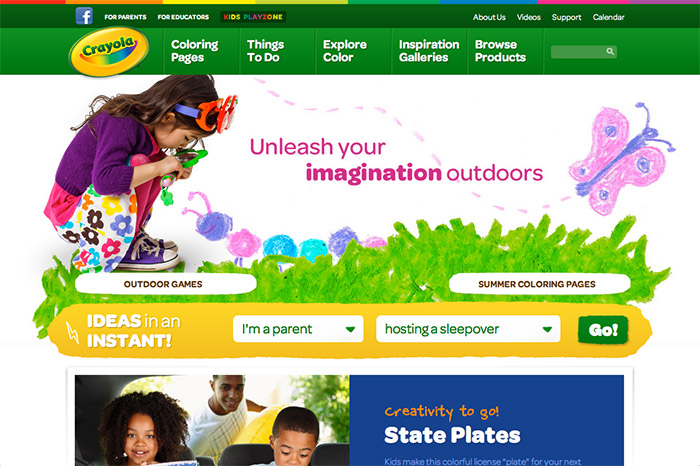
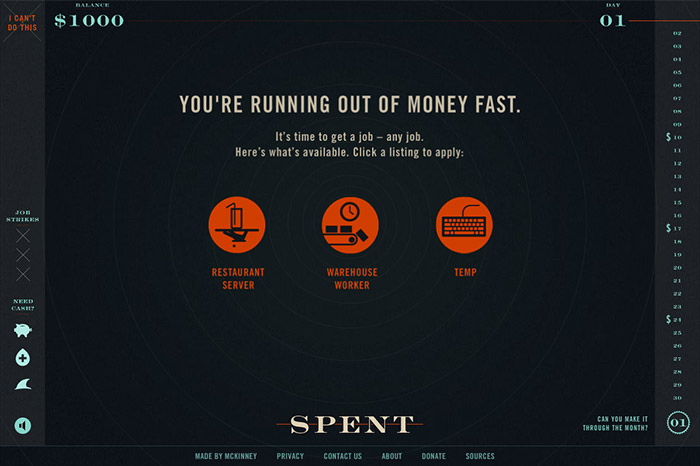
What does a typical day look like for you?
A: I wake up and make four eggs and a French pressed pot of coffee—everyday. That’s our routine.
J: And we always play music.
A: She takes more time to get ready because she’s much prettier than me, so I read and queue up a bunch of stuff in Instapaper. Then we walk together and I catch the train and she catches the bus across the street to go to work. We work and then get dinner together. Then we’ll either watch The Daily Show, Saturday Night Live, or a movie; or if we have energy or are under deadline, we’ll work on our own projects.
I’m a man of habit. On Saturday mornings, I wake up, throw my pants on and go to the corner cafe and wait for her and—
J: No, no, no. He’s not just waiting, he has his own time. He’s thinking; he’s writing or processing his week. It’s good because then I don’t feel rushed. I can take my time and finally meander over to the cafe when I’m ready.
A: We do a good job of giving each other space when we need it. We try to recognize when the other person needs to have time alone and for me, that’s probably a lot more often.
J: Well, it ebbs and flows. It depends what projects you’re on or the demand on your time during the day. I’m still transitioning into New York. I was the lead photographer at McKinney and when we moved up here, there wasn’t a position for me to move into so I lost a lot of my client base. I’ve been working as a project manager producing interactive projects, doing freelance photo gigs, and working on other projects. Sometimes I get home from a spreadsheet filled day, put my headphones on, and work at my studio table until I go to bed. It just depends.
What are your current albums on repeat?
A: I’ve had that new Beach House album on repeat. Beach House is typical. You’re supposed to say something cool here. I’ve also been listening to a lot of The Roots and Mos Def.
J: I go through phases. I’ve been on more of a classical phase. I love Max Richter’s work, Vivaldi, and ambient music. Lately we have been playing a lot of vinyl while we’re home—anything from vintage Hawaiian records and Otis Redding, to my favorite jazz compilation, Black Gold. I still listen to a lot of Radiohead, too. Often our music choice is heavily influenced by the weather and season, as I’m sure it is for many others. The new Santigold is awesome and hip-hop is always a classic in our home.
A: The last two weeks while riding the train home from work, I’ve been listening to the soundtrack to The Assassination of Jesse James by the Coward Robert Ford, which is music by Nick Cave and Warren Ellis. It has a cinematic quality to it, but with sparse acoustic instruments. Listening to it on the train totally changes everything. It’s not like listening to a song by SBTRKT, which makes you want to dance.
What are your favorite movies or TV shows?
J: The Daily Show and Mary Tyler Moore reruns are my consistent favorites. I listen to podcasts much more than I watch TV, Hulu, or Netflix. We don’t own a TV—we prefer to invest in our vinyl collection instead.
A: I watched Apocalypse Now for the first time the other day and I can’t stop thinking about it.
J: The latest Wes Anderson film is really great. It’s wonderful, down to the color palette and costumes. It’s so wistful and free. It goes back to that feeling of being uninhibited and not afraid to take risks. I also really love documentaries, Woody Allen films, Mob films, and Bollywood—anything inspiring, provocative, or funny.
Any favorite books?
J: Yes! The Sun Also Rises by Hemingway; Moby Dick; Faulkner; and all the classics. I recently finished Just Kids by Patti Smith. It was so beautifully written that I found myself crying in the coffee shop. It was embarrassing. But yeah, I like to read the classics and then throw in some more modern stuff for balance.
A: I joke around about how I can’t start another book until I finish the internet. Reading via Instapaper has been really nice because I get short, little bursts of reading. In order to read a book, I need to have a good amount of time to focus. I take a book to the cafe every weekend and start reading, but then I just need to sit and stare at the wall. I can’t take anything else in.
J: I prefer to read paper; Able prefers his screen.
(all laughing)
A: One of my favorite books is actually really small. It’s The Old Man and the Sea. I like the theme of perseverance—the man won’t give up on getting this fish back home, no matter what.
I like a good novel, but lately I tend to read nonfiction or poetry. I keep starting Fahrenheit 451 and I just can’t finish it. My reading habits lately have been shorter things through Instapaper—
J: And Cabinet magazine. He also reads me poetry while I bake—Neruda, Rilke, and Wendell Berry to name a few.
A: Yeah, it’s good times. I need more poetry in my life.
Favorite food?
A: Donuts. A good craft donut.
J: Indian food.
What kind of legacy do you hope to leave?
J: You can go first, Able.
A: Are you sure? You’re going to have to follow my answer.
(all laughing)
I guess this answer could sound cheesy, but I would want to be known as someone who cared about what he did and who did things on purpose and with reason. I’ll just stop there before I ruin my answer.
J: Wow. That was fast.
He didn’t give you much time to think.
J: I’d like to be known as someone who inspires, challenges, and cares about others. I want to be someone who is engaged in the conversation of life on a real level through art and design and also someone who cares about their craft and wants to make their best work, one project at a time.
“Don’t compare yourself; you’re on your own path. There isn’t one linear A to Z creative path…” / Julia
